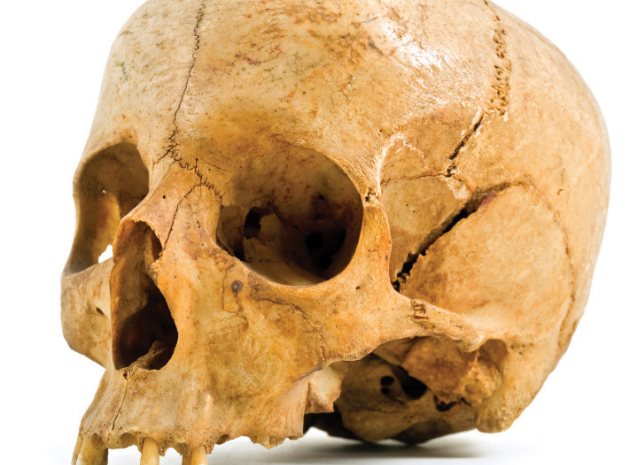Providing the right atmosphere can encourage students to take their creative writing to a whole new level, says Claire Sheffield…
Today you will…
- Develop the ability to use your imagination to create a story in the gothic genre
- Learn to use ambitious vocabulary to achieve specific effects
Starting a piece of creative writing can be a source of frustration for many young people; so much so that it can lead to loss of confidence. If ideas aren’t flowing, learners can quickly switch off and give up. Creative writing lessons, therefore, need to stimulate all of the senses and inspire students. Creative writing in the gothic genre – spooky stories – offers a wonderful opportunity for just this. This is a topic that always manages to enthuse pupils and one of the most exciting aspects is that the outcome is completely different with every group. Giving students time for thinking and the creation of ideas is essential. Therefore, this plan should be seen as just a starting point; it provides the stimulus from which a number of sessions can be developed. Subsequent periods can also focus on the development of different writing skills as required by the individual needs of a group. As a way into creative writing, this opener allows learners to be independent; an environment that enables them to thrive. Most importantly, it’s a lesson that students always leave talking about!
Starter activity
Creating a spooky word wall
Preparation is key to this lesson. For maximum impact, everything needs to be ready so that students enter the room and immediately feel a mysterious atmosphere. This can be created by closing blinds, turning off the lights, playing spooky music and displaying an image on the whiteboard of an old, decrepit, haunted-looking house (easily sourced from the internet). It is great to see students entering the room and looking around confused, wondering what is happening and therefore immediately engaged!
Ideally learners need to be seated in small table groups; this should be a buzzy lesson with lots of group discussion and sharing of ideas. As they take their seats they see on their table a map/floor plan of a house with a cross in one of the rooms; it’s one of the rooms from the house displayed on the board. This can be easily created in a word document using text boxes to create the floor plan and labelling each room. The idea is that each table will focus on a different room.
On each table an instruction card for the starter activity is also displayed. This should say something along the lines of: ‘As a group create a word wall of spooky words to describe the room you are in. Be as ambitious as possible! You have 5 minutes’. This could be completed on A3 paper or on post-it notes to stick up on the wall next to them; students will then have created their own bank of vocabulary that will help them in later parts of the lesson.
Main activities
1 Developing the plot
This lesson works well if very little is said by the teacher to the whole class. This adds to the mysterious atmosphere because students have to read and find out what to do at different stages. The teacher very much facilitates the learning in this lesson, by circulating the room, supporting and stretching groups as appropriate.
As the 5 minutes for the starter activity draws to a close, the spooky background music should be turned off and a short, shocking sound should be played. This could be a scream or a crash, for example. As this point another slide should be displayed on the board to move students onto the next stage of the lesson. This could read: ‘What has happened? Write the opening for a spooky story about a mysterious incident that has happened in the room you are in. Discuss for 5 minutes.’ Students are now using their imaginations to create a plot for their gothic story; it is important that students are encouraged to discuss and develop ideas before beginning the writing stage.
2 Going further
After around five minutes discussion, another slide can be displayed which reads: ‘Look for a clue about what has happened. You will find this somewhere near you!’ Underneath each table, students will find an envelope with a picture of a clue. This could be anything (e.g. a book or a camera). Equally, props could be placed around the room for students to find. The more unusual the better! It just gets pupils thinking more creatively. They will naturally want to talk about what they have found and start to revise their previous thinking
3 Stage three
After a few moments, the final slide of instruction can be displayed. This time, students are told: ‘Time to start writing. You have 25 minutes to use the clues so far to write the opening to a spooky story. Remember your objectives – be imaginative and use ambitious vocabulary to achieve a spooky effect.’ Spooky background music can be played throughout the writing stage. It is also important that learners have access to a thesaurus in order to locate more ambitious vocabulary.
Home learning
The lesson can be used as a starting point and developed in a number of ways… + Subsequent lessons/home learning activities could focus on developing other writing skills such as structuring a plot from beginning to end, using literary devices or using a variety of sentence structures and punctuation for effect.
+ The written work could lead into a speaking and listening lesson where students devise, rehearse and perform dramatic readings of their stories. + Students can explore a variety of gothic literature, researching different writers in the genre, reading different works and learning about the conventions of the genre. They can then develop their work to incorporate more of these conventions themselves.
Summary
After the main writing stage of this lesson, students are usually desperate to read their work out. To be able to do this in a meaningful way though, more time is usually needed, so it is appropriate to dedicate the following lesson to this. However, an opportunity to share work with others can be achieved through groups swapping their work and providing some feedback to consider for the following lesson. Questions such as those below can help students to structure their feedback in a constructive manner:
- How imaginative is the piece?
- How exciting did you find the story?
- Is there anything that does not make sense?
- How ambitious is the vocabulary? Does it achieve the desired spooky effect?
- How would you like the group to improve the piece?
- What questions can you ask the group to help them develop the piece further?
The following lesson can then begin with students considering this feedback in order to improve the work they have begun in this lesson.
Differentiation suggestions to support less able students:
- Provide a word bank or sentence starter bank.
- Provide additional resources to inspire ideas; further images or props, for example.
- Provide a wagoll (what a good one looks like) as a model of a piece of spooky writing.
- Suggestions to stretch more able students:
- Provide definitions/examples of literary devices and a challenge card asking students to ‘aim to include as many literary devices as possible.’
- Ask students to work towards a third learning objective: ‘use a variety of sentence structures for effect’ or ‘use a variety of punctuation for effect.’
- Allocate an expert to mixed ability groups who is asked to fulfil additional responsibilities as group leader.
- Provide a ‘challenging criteria’ card as a checklist of skills that more able students should aim to demonstrate.











Providing the right atmosphere can encourage students to take their creative writing to a whole new level, says Claire Sheffield…